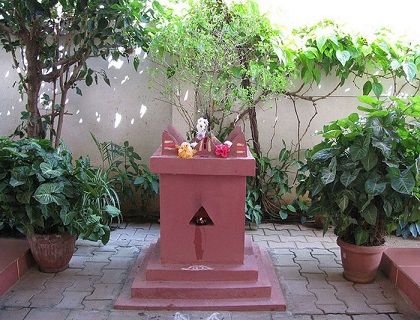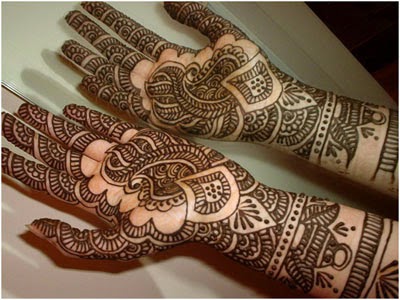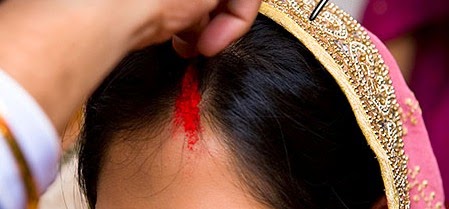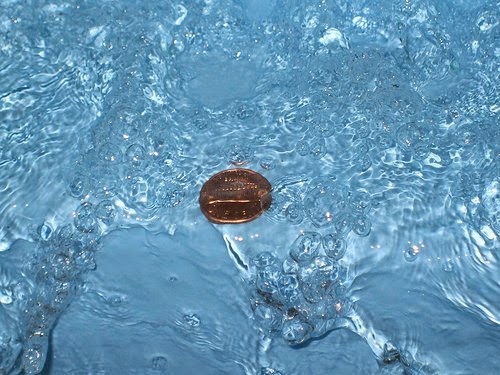India is considered a country, which is a culturally and traditionally diverse. We, Indians, hold dear our customs and traditions. Traditions in Hinduism were considered mainly as superstitions, but with the advent of science, it is becoming evident that these traditions are based on some scientific knowledge and moved from generations to generations as traditions. Though the common people did not know science in it, they were following it very faithfully over the years.
Let us look at some of these curious and amazing scientific explanations:
Throwing coins into a river
Joining both palms together to greet

In Hindu culture, people greet each other by joining their palms – termed as “Namaskar.” The general reason behind this tradition is that greeting by joining both the palms means respect. However, scientifically speaking, joining both hands ensures joining the tips of all the fingers together; which are denoted to the pressure points of eyes, ears, and mind. Pressing them together is said to activate the pressure points which helps us remember that person for a long time. And, no germs since we don’t make any physical contact!
Why do Indian women wear toe rings?
Applying Tilak on the forehead

Why do temples have bells?

These bells are made in such a way that when they produce a sound it creates a unity in the Left and Right parts of our brains. The moment we ring the bell, it produces a sharp and enduring sound which lasts for minimum of 7 seconds in echo mode. The duration of echo is good enough to activate all the seven healing centres in our body. This results in emptying our brain from all negative thoughts
Why do we have Navratras?

Our living style has drastically changed if we compare it to the society hundreds & thousands of years ago. The traditions which we follow in present are not establishments of today but of the past. Ever thought, why do we have Navratras twice a year unlike other festivals like Deepawali or Holi? Well, both these months are the months of changing seasons and the eating habits of both the seasons are quite different from each other.
Navratras give enough time to the body to adjust and prepare itself for to the changing season. These nine days were marked as a period when people would clean their body system by keeping fasts by avoiding excessive salt and sugar, meditate, gain a lot of positive energy, gain a lot of self confidence & increase the self determination power (fasts are a medium to improve our will power and self determination) and finally get ready for the challenges of the changed season.
Why do we worship ‘Tulsi’ plant?

Hindu religion has bestowed ‘Tulsi’, with the status of mother. Also known as ‘Sacred or Holy Basil’, Tulsi, has been recognized as a religious and spiritual devout in many parts of the world. The vedic sages knew the benefits of Tulsi and that is why they personified it as a Goddess and gave a clear message to the entire community that it needs to be taken care of by the people, literate or illiterate. We try to protect it because it is like Sanjeevani for the mankind.
Tulsi has great medicinal properties. It is a remarkable antibiotic. Taking Tulsi everyday in tea or otherwise increases immunity and help the drinker prevent diseases, stabilize his or her health condition, balance his or her body system and most important of all, prolong his or her life. Keeping Tulsi plant at home prevents insects and mosquitoes from entering the house. It is said that snakes do not dare to go near a Tulsi plant. Maybe that is why ancient people would grow lots of Tulsi near their houses.
Peepal’ tree is almost useless for an ordinary person, except for its shadow. ‘Peepal’ does not a have a delicious fruit, its wood is not strong enough for any purpose then why should a common villager or person worship it or even care for it? Our ancestors knew that ‘Peepal’ is one of the very few trees (or probably the only tree) which produces oxygen even at night. So in order to save this tree because of its unique property they related it to God/religion.
Why should Tulsi not be chewed with teeth?

It is a popular belief that Tulsi is the wife of Lord Vishnu; therefore, chewing it will be a mark of disrespect. However, botanists, in the course of their research, found that Tulsi plant has the maximum of mercury. If raw mercury is applied to teeth, they fall immediately. That’s why in Hindu religion, Tulsi leaves are not chewed but swallowed.
Start with spice, end with sweet

Our ancestors have stressed on the fact that our meals should be started off with something spicy and sweet dishes should be taken towards the end. The significance of this eating practice is that while spicy things activate the digestive juices and acids and ensure that the digestion process goes on smoothly and efficiently, sweets or carbohydrates pulls down the digestive process. Hence, sweets were always recommended to be taken as a last item
Applying Mehndi/ henna on hands

Besides lending color to the hands, mehndi is a very powerful medicinal herb. Weddings are stressful, and often, the stress causes headaches and fevers. As the wedding day approaches, the excitement mixed with nervous anticipation can take its toll on the bride and groom. Application of mehndi can prevent too much stress because it cools the body and keeps the nerves from becoming tense. This is the reason why mehndi is applied on the hands and feet, which house nerve endings in the body.
Celebration and cleaning during Diwali

Diwali usually falls in October or November which marks the start of winter season and end of rainy season. Rainy season wasn’t a good time for everyone back then; many homes needed repair and renovation after a heavy fall. That is why time before diwali was considered the period during which everyone can indulge in cleaning and beautification of their home. And also take out their winter clothes and pack the summer ones.
Why not to sleep with your head towards North?

Myth is that it invites ghost or death but since says that it is because human body has its own magnetic field (Also known as hearts magnetic field, because the flow of blood) and Earth is a giant magnet. When we sleep with head towards north, our body’s magnetic field become completely asymmetrical to the Earth’s Magnetic field. That cause problems related to blood pressure and our heart needs to work harder in order to overcome this asymmetry of Magnetic fields.
Apart from this another reason is that Our body have significant amount of iron in our blood. When we sleep in this position, iron from the whole body starts to congregate in brain. This can cause headache, Alzheimer’s Disease, Cognitive Decline, Parkinson disease and brain degeneration.
Why no meat on particular days?

Hindus do not eat meat on particular days – not limited but including: Tuesdays, Thursdays, and Saturdays. The reason is that as a human being we need only a little amount of meat to fulfill the requirements of our body such as iron, vitamin B12 and other vital nutrients. But we often get addicted to eating meat which is not good for health. It can cause diseases like piles, kidney stones, colon cancer etc. Therefore, Hinduism has placed some restrictions by assigning days to particular deities.
Application of Sindoor or Vermillion

It is interesting to note that that the application of sindoor by married women carries a physiological significance. This is so because Sindoor is prepared by mixing turmeric-lime and the metal mercury. Due to its intrinsic properties, mercury, besides controlling blood pressure also activates sexual drive. This also explains why Sindoor is prohibited for the widows. For best results, Sindoor should be applied right upto the pituitary gland where all our feelings are centered. Mercury is also known for removing stress and strain.
The Scientific explanation of touching feet

Usually, the person of whose feet you are touching is either old or pious. When they accept your respect which came from your reduced ego (and is called your shraddha) their hearts emit positive thoughts and energy (which is called their karuna) which reaches you through their hands and toes. In essence, the completed circuit enables flow of energy and increases cosmic energy, switching on a quick connect between two minds and hearts. To an extent, the same is achieved through handshakes and hugs.
The nerves that start from our brain spread across all your body. These nerves or wires end in the fingertips of your hand and feet. When you join the fingertips of your hand to those of their opposite feet, a circuit is immediately formed and the energies of two bodies are connected. Your fingers and palms become the ‘receptor’ of energy and the feet of other person become the ‘giver’ of energy.
Why do we fast?

The underlying principle behind fasting is to be found in Ayurveda. This ancient Indian medical system sees the basic cause of many diseases as the accumulation of toxic materials in the digestive system. Regular cleansing of toxic materials keeps one healthy. By fasting, the digestive organs get rest and all body mechanisms are cleansed and corrected. A complete fast is good for heath, and the occasional intake of warm lemon juice during the period of fasting prevents the flatulence.
Since the human body, as explained by Ayurveda, is composed of 80% liquid and 20% solid, like the earth, the gravitational force of the moon affects the fluid contents of the body. It causes emotional imbalances in the body, making some people tense, irritable and violent. Fasting acts as antidote, for it lowers the acid content in the body which helps people to retain their sanity. Research suggests there are major health benefits to caloric restriction like reduced risks of cancer, cardiovascular diseases, diabetes, immune disorders etc.
Why do Indian women wear Bangles?

Normally the wrist portion is in constant activation on any human. Also the pulse beat in this portion is mostly checked for all sorts of ailments. The Bangles used by women are normally in the wrist part of ones hand and its constant friction increases the blood circulation level. Further more the electricity passing out through outer skin is again reverted to one’s own body because of the ring shaped bangles, which has no ends to pass the energy outside but to send it back to the body.




